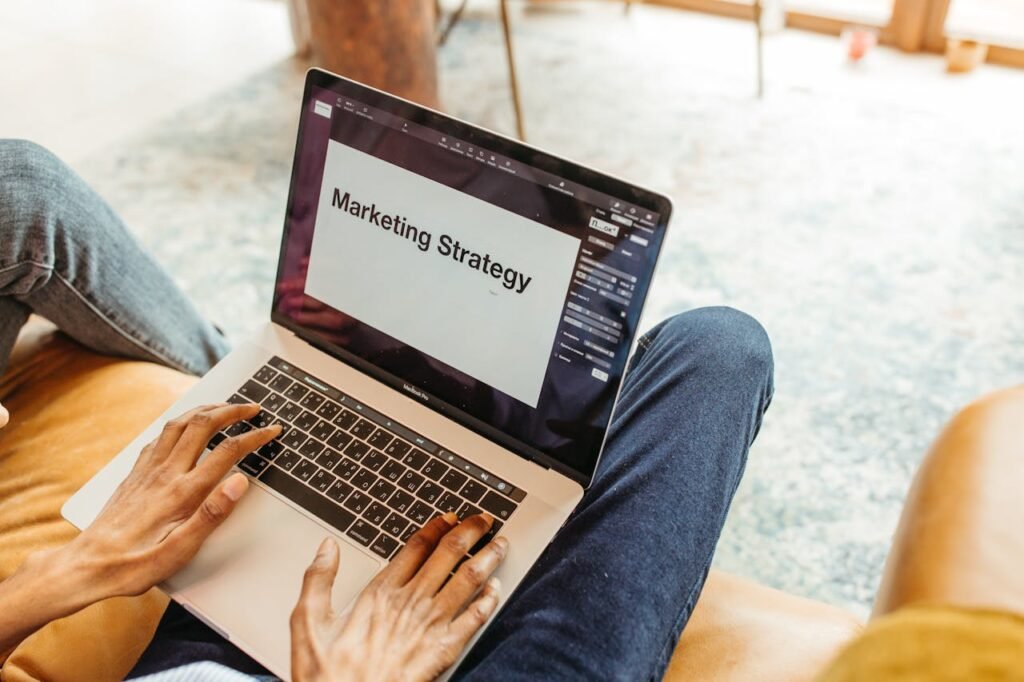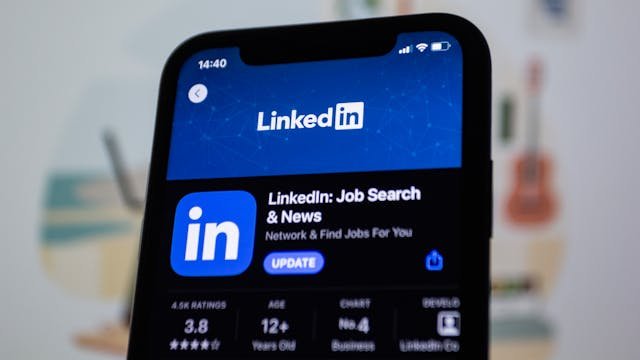Acquiring new customers is essential for growth, but it’s no secret that acquisition costs can add up quickly. That’s where lead nurturing comes in. By building relationships and guiding prospects through the decision-making process, you can convert leads into loyal customers without overspending. The trick is doing it efficiently, so every interaction counts.
Lead nurturing isn’t just about sending a few emails or making a couple of calls. It’s about delivering value, staying relevant, and building trust—step by step. In this guide, we’ll dive deep into how you can nurture leads in a way that not only strengthens relationships but also slashes your acquisition costs.
Step 1: Understand the Importance of Lead Nurturing
Why Nurturing Beats Cold Selling
Cold leads often aren’t ready to buy. They may be curious about your product, but they need more information or trust before making a decision. Lead nurturing bridges the gap between curiosity and commitment. It helps you stay top-of-mind while gradually moving prospects closer to a purchase.
For example, instead of bombarding a lead with sales pitches, you could send them useful content that answers their questions. A business offering accounting software might share a guide like “How to Streamline Your Small Business Finances.” This approach builds credibility and positions you as a helpful expert.
The result? Leads who feel supported and informed are more likely to buy—and at a lower cost, since you’ve avoided wasting resources on uninterested prospects.
How Nurturing Saves Money
Nurturing leads allows you to focus your resources on the right prospects at the right time. Instead of chasing cold leads who may never convert, you’re investing in people who have already shown interest. This targeted approach reduces wasted effort and increases conversion rates, driving down your customer acquisition cost (CAC).
By keeping leads engaged, you also extend the lifetime value of your marketing efforts. For example, a lead who downloads an e-book today might purchase a product months later—provided you’ve nurtured them effectively.
Step 2: Build a Strong Lead Scoring System

Segment Leads by Interest and Engagement
Not all leads are created equal. Some are actively considering your product, while others are just browsing. A lead scoring system helps you prioritize your efforts by assigning points based on behaviors and characteristics.
For example, visiting a pricing page might earn a lead more points than reading a blog post. Similarly, a lead in your target industry might score higher than one outside it. By tracking these actions and attributes, you can identify which leads are most likely to convert.
A clear scoring system ensures you’re spending time and resources on the leads that matter most.
Use Data to Personalize Interactions
Lead scoring isn’t just about ranking prospects; it’s about understanding them. By analyzing the data, you can tailor your outreach to match each lead’s stage in the buying journey. For instance, a lead who’s downloaded multiple whitepapers might be ready for a demo, while someone who’s only read one blog post might need more educational content.
Personalized interactions show leads that you understand their needs, making them more likely to trust and engage with your brand.
Step 3: Create Valuable and Relevant Content
Educate First, Sell Later
People don’t want to be sold to—they want solutions. Start by providing content that educates and informs. For example, if you sell project management software, share articles like “10 Tips for Better Team Collaboration” or “How to Reduce Project Delays.” This positions you as a helpful resource, building trust with your audience.
As leads engage with your content, you can gradually introduce more product-specific information, such as case studies or product comparisons. The key is to let value lead the way, so when the time comes to pitch your product, they’re already primed to say yes.
Align Content with the Buying Journey
Different stages of the buying journey require different types of content. Early-stage leads might need general information about their problem, while mid-stage leads are looking for solutions and late-stage leads want specifics.
For instance, a lead researching “how to improve sales efficiency” might appreciate a blog post at first. Once they’ve shown interest, a whitepaper on “The ROI of Sales Automation Tools” might be more appropriate. Finally, a product demo can help seal the deal.
By delivering the right content at the right time, you keep leads engaged and moving forward.
Step 4: Leverage Automation for Efficiency
Automate Routine Tasks
Manual lead nurturing can be time-consuming and inconsistent. Automation tools like HubSpot, Mailchimp, or ActiveCampaign allow you to set up workflows that send the right messages to the right people at the right time.
For example, you can create an automated email sequence that welcomes new leads, provides helpful content, and invites them to a webinar. Each step is triggered by their actions, ensuring timely and relevant communication without requiring constant manual effort.
Automation doesn’t just save time—it ensures no lead slips through the cracks.
Use Behavioral Triggers
Behavioral triggers take automation a step further by responding to specific actions leads take. For example, if a lead clicks on an email about pricing, you could automatically send them a follow-up with a case study or offer to schedule a call.
These personalized responses show leads that you’re paying attention to their needs, increasing the likelihood of conversion. Behavioral triggers also make your nurturing process more dynamic and responsive, ensuring your efforts feel tailored rather than generic.
Step 5: Build Relationships with Personalized Outreach

Focus on Quality Over Quantity
When it comes to lead nurturing, one meaningful interaction is worth more than ten generic messages. Personalize your outreach based on what you know about each lead. For example, if a lead is in the healthcare industry, mention how your product addresses challenges specific to their field.
Personalization can extend beyond email. For high-value leads, consider a phone call or a personalized video message. These small touches create a stronger connection, showing leads that you value their time and understand their needs.
Quality interactions build trust and make your brand stand out in a crowded marketplace.
Follow Up Strategically
Persistence is important, but so is timing. Follow up regularly without overwhelming your leads. For example, if someone downloads an e-book, wait a few days before sending a related resource or an invitation to chat.
Each follow-up should add value. Instead of asking, “Are you ready to buy?” try offering something helpful, like “I noticed you were interested in [topic]—here’s a free webinar that dives deeper.” This approach keeps the conversation going while reinforcing your role as a trusted advisor.
Step 6: Measure and Optimize Your Efforts
Track Key Metrics
To know if your lead nurturing efforts are working, track metrics like open rates, click-through rates, conversion rates, and the length of your sales cycle. These metrics reveal what’s effective and where you can improve.
For example, if your email open rates are low, test different subject lines. If leads are dropping off after the second email in a sequence, analyze the content and timing to identify what’s causing the disconnect.
Regularly reviewing your performance ensures you’re making data-driven decisions that improve efficiency and reduce costs.
Continuously Refine Your Approach
Lead nurturing isn’t a one-size-fits-all process. What works today might not work tomorrow. Test new ideas, experiment with different content formats, and gather feedback from your leads to refine your strategy.
For instance, if a webinar generates high engagement, consider offering more live events. If a certain type of email consistently underperforms, adjust the format or message. The more you adapt to your audience’s preferences, the more efficient your efforts will become.

Related: Check out our free tools:

Step 7: Enhance Engagement with Multi-Channel Nurturing
Don’t Rely on Just One Channel
While email is a powerful tool for lead nurturing, it shouldn’t be your only method. Using multiple channels ensures you stay visible and accessible to your leads, regardless of their preferred communication platform. Combine email with social media, retargeting ads, SMS, and even direct mail to create a well-rounded strategy.
For example, a prospect who downloads an e-book might receive an automated email sequence while also being shown retargeting ads on Facebook or Instagram. This multi-channel approach reinforces your message and keeps your brand top-of-mind.
When you meet leads where they are, you make it easier for them to stay engaged.
Use Social Media to Build Connections
Social media isn’t just for brand awareness—it’s also a valuable lead nurturing tool. Engage with leads on platforms like LinkedIn, Twitter, or Instagram by sharing relevant content, commenting on their posts, or sending personalized messages.
For instance, if a lead interacts with your LinkedIn post about industry trends, follow up with a direct message offering a related whitepaper or inviting them to join a webinar. These interactions show that you’re paying attention and add a personal touch to your nurturing efforts.
Social media allows for casual, real-time engagement, making it an excellent complement to more structured channels like email.
Step 8: Build Trust with Social Proof and Success Stories
Showcase Customer Testimonials
Trust is a critical factor in the decision-making process. One of the most effective ways to build trust is by showcasing testimonials from satisfied customers. Include these in your emails, on landing pages, or even in retargeting ads.
For example, if you’re nurturing a lead interested in your CRM software, send them a testimonial from a similar business highlighting how your product helped streamline their sales process. Seeing someone else’s success story can help overcome doubts and inspire confidence.
When leads see that others have benefited from your offering, they’re more likely to trust that they will too.
Use Case Studies to Demonstrate Results
For leads further down the funnel, case studies can be particularly persuasive. They provide detailed, real-world examples of how your product or service solves problems and delivers value.
For instance, a case study might outline how a client increased their revenue by 30% after implementing your solution. Include specific metrics, challenges faced, and the step-by-step process, as these details make the story more relatable and credible.
Case studies are an excellent tool for nurturing leads who are evaluating their options and need that final push to convert.
Step 9: Incentivize Action with Time-Sensitive Offers

Create a Sense of Urgency
Sometimes, leads need a little extra motivation to take the next step. Time-sensitive offers like discounts, free trials, or limited-time bonuses can create urgency and drive immediate action.
For example, send an email saying, “Sign up for a demo within the next 48 hours and receive a free one-month trial!” This not only encourages leads to act quickly but also gives them a tangible benefit for moving forward.
Urgency works because it taps into the fear of missing out (FOMO), which can be a powerful motivator.
Reward Engagement
Incentives don’t always have to be tied to purchases. Rewarding engagement, such as attending a webinar or downloading multiple resources, can keep leads invested in your brand.
For instance, after a lead attends a webinar, follow up with an email offering them exclusive access to a premium resource or a personalized consultation. These gestures show appreciation for their interest while gently guiding them closer to conversion.
By creating a cycle of value and reward, you nurture leads while building goodwill and trust.
Step 10: Use Data to Predict and Optimize
Leverage Predictive Analytics
Data isn’t just for tracking performance—it can also help you anticipate what your leads need next. Predictive analytics uses historical data and behavior patterns to identify which actions are most likely to convert a lead.
For example, if your data shows that leads who view three or more product demo videos are 70% more likely to make a purchase, you can prioritize guiding leads toward these videos. This proactive approach ensures your nurturing efforts are focused on high-impact activities.
By understanding what works, you can refine your strategy to drive better results with less effort.
Continuously Monitor and Adjust
Lead nurturing isn’t a set-it-and-forget-it process. Regularly review your campaigns to identify areas for improvement. For instance, if a particular email sequence isn’t driving engagement, test new subject lines, CTAs, or content formats.
Look for trends in your metrics to uncover opportunities. For example, if leads are dropping off after interacting with a specific piece of content, consider revising it or providing additional resources to address any gaps.
Optimization is an ongoing process, but it’s essential for ensuring your nurturing strategy remains effective and efficient.
Step 11: Build Long-Term Relationships Beyond Conversion

Continue Nurturing After the Sale
Nurturing doesn’t end once a lead converts. Post-sale engagement is crucial for building loyalty and encouraging repeat business. Send follow-up emails thanking new customers, offering tips for using your product, or sharing additional resources.
For example, a SaaS company might send onboarding emails that guide customers through setup and highlight key features. This helps them get the most value out of the product, increasing satisfaction and retention.
Happy customers are also more likely to become brand advocates, recommending your product to others and driving down your acquisition costs over time.
Turn Customers into Advocates
Encourage satisfied customers to share their experiences through reviews, testimonials, or referrals. You can even incentivize referrals with discounts or rewards, turning your loyal customers into a cost-effective acquisition channel.
For instance, a fitness brand could offer a “Refer a Friend” program where both the referrer and the new customer receive a discount. This not only brings in new leads but also strengthens relationships with existing customers.
By leveraging advocacy, you extend the impact of your nurturing efforts and create a virtuous cycle of growth.
Conclusion: The Power of Strategic Lead Nurturing
Efficient lead nurturing is the key to lowering acquisition costs while building strong, lasting relationships. By understanding your audience, delivering personalized content, and leveraging tools like automation, you can guide prospects through the buying journey without wasting resources.
The secret lies in being consistent, relevant, and valuable. Every interaction should move leads closer to a decision while reinforcing their trust in your brand. With the right approach, you’ll not only convert more leads but also create loyal customers who continue to choose you over the competition.
Start implementing these strategies today, and watch as your acquisition costs drop while your conversions soar. Lead nurturing isn’t just a tactic—it’s the foundation of sustainable, scalable growth.
READ NEXT:
- Are Vanity Metrics Killing Your Marketing Efficiency? Here’s What to Track Instead
- Pinpointing Digital Marketing ROI: Why Your Metrics Aren’t Telling the Full Story
- Unlocking Real ROI in Digital Marketing: The Hidden Costs Draining Your Budget
- How Misaligned Marketing Funnels Are Blocking Your ROI Potential
- Best Digital Marketing Agency In Santa Ana, California
- Best Digital Marketing Agency In San Francisco, California





















